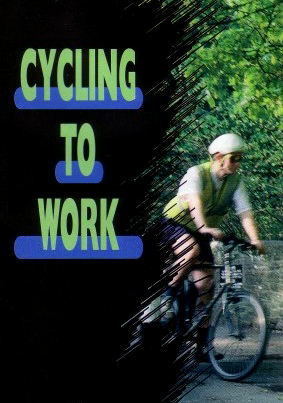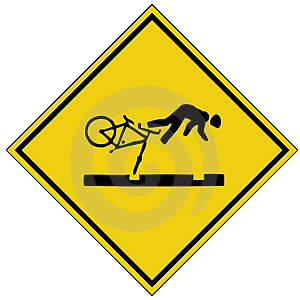

I remember my first cycle. It had three wheels and I could just about drive it around the garden. I think I was four. A few years later I remember one Christmas morning belatedly discovering my first proper bicycle, blue and shiny which had been hidden under some camouflage wrapping in the living room. I got a thrill every time I took the bike out on the road, as though I was a real adventurer, exploring unknown lands and peoples.
Now, forty years on, I cycle to work on my trusty folding machine. Cycling is a very distinctive occupation and I would like to offer you some impressions of what it is like. My usual journey has two halves, first through country roads and then, after a train ride, through the city of London. The air may be cleaner in the country but the cycling is not as interesting as it is in London. In the country there are long stretches with no break, and often little traffic.
I cycle to work for several reasons. I save £12 a day on parking and tube tickets. Cycling is quicker around London than any other form of transport – it takes 20 minutes to cycle between Euston station and Aldgate where I work, and 30 on the tube. After a good cycle I arrive invigorated and after a shower I feel more alive, whereas I used to feel drained after a drudge across London on a tube. (By the way: if a cyclist suffers on average one puncture a year, and he gets a puncture today, is he less likely to get another puncture tomorrow?)
Perhaps the most dangerous part of a journey is the very beginning. This is when the cyclist is not yet tuned in – that takes time, and it is easy to slip on ice, hit a kerb, or misjudge a space. Once the wheels are turning, I quickly settle into my rhythm. The first thing is to adapt to the conditions: if it is wet or icy it’s helpful to keep a good upright balance and try to sense the rubber on the road so that I can respond quickly if the wheels start to slip, and to adapt my posture for hot, wet, windy, foggy, or cold conditions.
My body seems to get me from A to B fairly effortlessly. But there is quite a bit going on! Can I be aware of the posture of the body? I have some elbow pain which I put down to riding with arms too stiff. It is possible to pick up an injury if any part of my body is too tense, so I try to relax. Can I remain in touch with this during the ride so that if any muscle stiffens too awkwardly, which they seem to want to do sometimes, I can relax it again quite quickly?
The position of my body on the bike is vital. I try not to put all my weight into the saddle. I prefer to keep it just behind the front wheel if I can. This gives me maximum agility. From here, to turn I only need to shift my weight slightly to the side. And it is not good to have your weight in the saddle on a bumpy road as the bump will be transferred to the lower back and can lead to injuries there. On really bumpy roads I ride off the saddle completely, trying to hold my legs and arms in a very relaxed state so they can act as efficient shock absorbers.

How aware am I of where I am on the road? It is important not to obstruct traffic behind, but also that cars, buses and trucks behind can see me, and understand what I am going to do in good time. What is behind me now might be overtaking soon, and this needs to be factored into any manoeuvring decision I make. The ideal cyclist has eyes and ears on the back of his head as well as the front.
I recently transferred to using pedal cleats and special shoes that bind onto the pedal. This allows me to transfer power to the bike on both the down-stroke (by pushing on the pedal as normal) and the up-stroke (by pulling on the pedal, which you can only do if your foot is bound to the pedal). The binding mechanism is clever enough to allow me to release my foot whenever I need to. However, I fell off in front of a bus at a traffic light a few weeks ago. It is another thing one has to remember – every cleated cyclist will fall off at some point by forgetting to release at a traffic light- remembering to release feet from cleats can make the difference between living and dying.
A cyclist must think and plan ahead. When I cycle through London I am generally looking 30 metres or more ahead of me so that I can anticipate what I will be cycling through in the next few seconds and adjust accordingly. I try to work out what other vehicles ahead are likely to do, and to be attentive to pedestrians who often jump into the road without thinking. How does one make a pedestrian in the road aware of one’s presence? Some cyclists use little bells, some use horns. As I don’t like the sound of those. I use my voice, but try to avoid unsettling people. Most times they jump out their skins like I imagine a sleepwalker does when woken suddenly from a nice dream.
I also need to know where I am in the overall journey. This is not so difficult usually because I don’t need to think about where to go – my body takes me there by itself. But on a new journey I need to be more attentive and keep an orientation of where I am in relation to north/south/east/west, or to the river. On a well-known journey there is much more scope for day-dreaming.
Is this is why I don’t vary or question my life too much – because I might wake myself up accidentally? But then, what if I wanted to wake up? Perhaps I should make more new journeys! When I am paying attention to road signs and compass directions there is less attention available for dreaming, but also less available for sensing my body, breathing in my surroundings, and just being there. What happens if I focus more on relaxation and breathing than on dreaming during a well-known journey? Sometimes the bike almost seems to fly through the traffic and my exhilaration and excitement is like being on my first bike again, exploring new lands. I find that I am less competitive, and I simply enjoy the moment much more.
I learnt road safety the hard way, at a young age making mistakes and being told off by other drivers and pedestrians. I encourage my children to go onto the road cycling so that they develop road sense at an early age, and because there are not so many risks where we live. I have seen people knocked off their bikes, and the fatal consequences of cycling mistakes. Well, life is risky, isn’t it? Never cross a road? And I like cycling…….

STOP PRESS-news of the cycle hire scheme coming to London in Summer 2010: